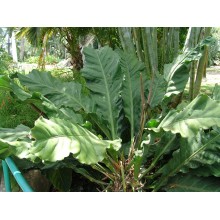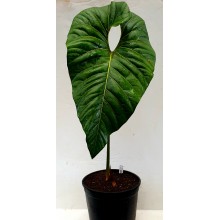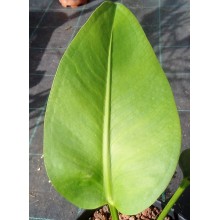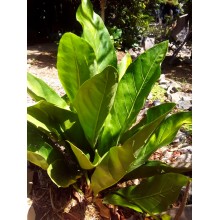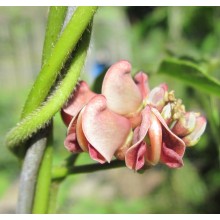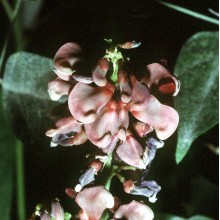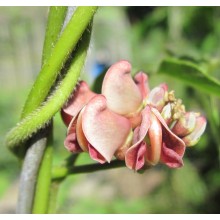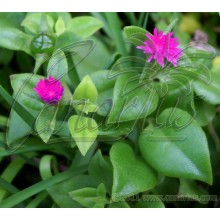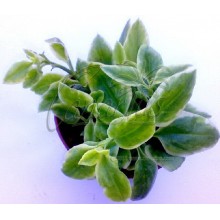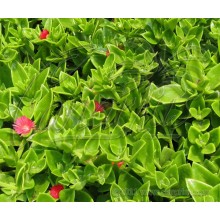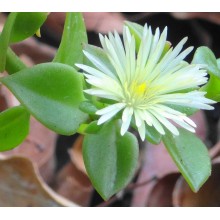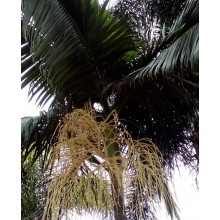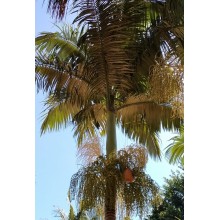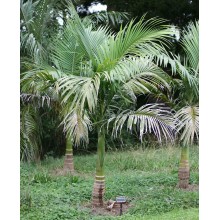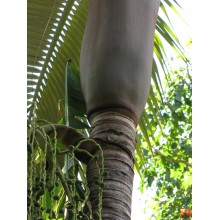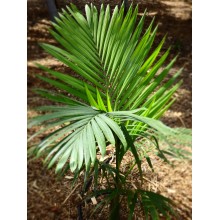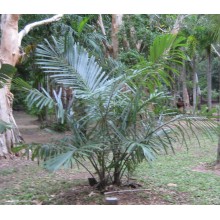Plantas generales Hay 1882 productos.

Si te gustan las plantas exóticas, acabas de llegar al lugar correcto. Canarius ofrece plantas exóticas difíciles de conseguir, que raramente se encuentran en tiendas de jardinería. Nuestra tienda tiene especies naturales, así como híbridos poco frecuentes. Ofrecemos plantas exóticas procedentes de las Islas Canarias.
Los pedidos se envían a cualquier lugar de Europa y también a todo el mundo. Los paquetes llegarán a su casa en pocos días después de ser enviados (tenga en cuenta que también necesitamos algunos días para el procesamiento). No dude en contactar con nosotros si tiene alguna pregunta.
Subcategorías
-
Suculentas
Los desiertos y las áreas secas son el hogar de las plantas más interesantes. Canarius ofrece una selección creciente de plantas suculentas de la máxima calidad, ya que han sido cultivadas al aire libre, bajo el pleno sol de las Islas Canarias.
Las suculentas o "plantas crasas" son especies que retienen agua, que están adaptadas a las condiciones de sequía. Estas plantas almacenan succum (jugo, agua) en sus hojas, tallos o raíces, y con frecuencia muestran un aspecto grueso y carnoso.
-
Exóticas
Las plantas exóticas son especies originarias de otras partes del mundo y que normalmente, tienen un carácter ornamental, una vegetación exuberante, con flores coloridas, formas inusuales... Aquí puede encontrar una gran variedad de plantas exóticas: desde bromelias y heliconias, hasta palmeras y plantas de interior.
Las plantas exóticas no tienen un uso específico. Los coleccionistas compran este tipo de plantas por su rareza, para decoración interior o exterior, en función de sus características. -
Frutales y Medicinales
Los árboles frutales, las hierbas y las plantas medicinales nos permiten mejorar nuestra salud y alimentación. En esta sección, cada tipo de planta tiene efectos saludables, tanto los frutales (Feijoa, piña, Fina de Jete...), como plantas para la salud, como Graviola, Aloe vera, Callisia fragrans...
En el metabolismo normal de todos seres vivos, el organismo produce algunas sustancias a partir de los nutrientes presentes en el entorno; algunos de estos químicos son parte del proceso en todo (o casi todo) tipo de especies. Normalmente, los componentes útiles están concentrados en algunas de sus partes: hojas, semillas, flores...
¡Encuentre su planta saludable y cómprela online!
-
Especiales
En canarius.com tratamos de ir más allá de los límites en el campo de la botánica. En nuestra tienda en línea tratamos de facilitar la compra de plantas de cualquier parte del mundo. Por eso, cultivamos desde las especies más comunes hasta las plantas más especiales, como podrá ver en esta sección.
-
Anthurium crassinervium
Anthurium crassinervium
This "birdnest Anthurium" with glossy, wide and ruffled leaves can slowly grow to enormous proportions. As a house plant it is usually smaller.
46,00 € -
Anthurium decipiens
Anthurium decipiens
This giant-leaved aroid is considered a holy grial by those who love exotic foliage. It was called Anthurium salgarense until 2019, when it was split out of the species salgarense as it was described as a new species on its own.
285,00 € -
Anthurium maricense
Anthurium maricense
Small, elegant birdnest Anthurium with roundis thick leaves,15-30 cm long. It is endemic to a small coastal area close to Río de Janeiro, exposed to wind and drought. It is surprisingly hardy to cold and stood light frost in Mediterranean conditions.
46,20 € -
Anthurium schlechtendalii
Anthurium schlechtendalii
Extremely ornamental birdnest anthurium with nice dark purple inflorescences, followed by thick "tails" of glossy red fruits. It does well in pots or as an epiphytes, attaining 50-120 cm in height. It is mid-sized and goes well as an indoor plant.
58,90 € -
Anthurium wendlingeri
Anthurium wendlingeri
Truly exotic aroid with narrow and long, penduluous , dark leaves and an unusal corkscrew inflorescence.
68,00 € -
Apios americana 'Early Blooming'
Apios americana 'Early Blooming'
This is a early blooming cultivar of Groundnut or Hopniss. This "ancient crop", scientifically named Apios americana, belongs to the family of beans and actually grows much like a bean, but in its case the edible part is the tuberous root system hidden underground, which is delicious and high in protein.
18,30 € -
Apios americana 'Late Blooming'
Apios americana 'Late Blooming'
This is a late blooming cultivar of Groundnut or Hopniss. This "ancient crop", scientifically named Apios americana, belongs to the family of beans and actually grows much like a bean, but in its case the edible part is the tuberous root system hidden underground, which is delicious and high in protein.
18,30 € -
Apios americana 'Nutty'
Apios americana 'Nutty'
This is a nutty-tasting blooming cultivar of Groundnut or Hopniss. This "ancient crop", scientifically named Apios americana, belongs to the family of beans and actually grows much like a bean, but in its case the edible part is the tuberous root system hidden underground, which is delicious and high in protein.
18,30 € -
Aptenia cordifolia
Aptenia cordifolia
Four 14-20 cuttings - Creeping, fast growing groundcover mesemb with flowers in summer. This is the true A. cordifolia, with hearth-shaped leaves with bumpy surface and purple-pink flowers. It takes more cold than other aptenias.
11,00 € -
Aptenia cordifolia Variegata
Aptenia cordifolia Variegata
NEW ! - Branched plant. Delicate creeping succulent with cream and green foliage. Leaves are glossy, hearth-shaped and slightly succulent.
12,50 € -
Aptenia cordifolia x A. haeckeliana
Aptenia cordifolia x A. haeckeliana
Four 15-20 cm cuttings. Creeping, fast growing succulent plant with bright pink-red flowers in summer. This hybrid Aptenia is the perfect groundcover for gardens in coastal mediterranean climates. This is called Aptenia 'Red Apple' in the USA.
11,20 € -
Aptenia haeckeliana
Aptenia haeckeliana
Aptenias are excellent groundcover plants. They are creeping succulents, potentially evergrowing in the "mesemb" family: Aizoaceae. There are 4 species in the genus Aptenia and this A. haeckeliana is the beautiful one with the yellow flowers.
12,40 € -
Archontophoenix maxima
Archontophoenix maxima
Very elegant palm from Australia, with slender ringet trunk, topped by a showy bright green crownshaft.
32,50 € -
Archontophoenix myolaensis
Archontophoenix myolaensis
This species of Archontophoenix is native to a small area in the mountainous region west of Cairns in N.W. Queensland, found in a few locations in gallery forests following rivers. It is similar to the more common Archontophoenix cunninghamiana, with a slightly smaller size, a bluer crownshaft and some other minor differences.
42,00 € -
Archontophoenix purpurea
Archontophoenix purpurea
The showy, colourful crownshaft is the masterpiece of this elegant solitary palm from australia. A rainbow of purple, green and blue.
52,00 € -
Archontophoenix tuckeri
Archontophoenix tuckeri
Uncommon Archontophoenix species from Northern Australia. Leaves are silver underneath, somewhat pendulous or drooping. It is suited to coastal Mediterranean condition and it takes cool weather and short, light frosts.
28,60 € -
Areca catechu
Areca catechu
Areca catechu is a species of palm native to the Philippines cultivated for areca nuts. Medium-sized palm tree, growing straight to 20 m tall, with a trunk 10–15 cm in diameter. The leaves are 1.5–2 m long, pinnate, with numerous, crowded leaflets.
29,40 € -
Arenga australasica
Arenga australasica
Clumping feather palm from NE Australia, found mainly in coastal areas. Despite its tropical origin, it grows in colder climates.
72,00 €
En estos momentos tenemos pocos productos en esta categoría Plantas generales




















